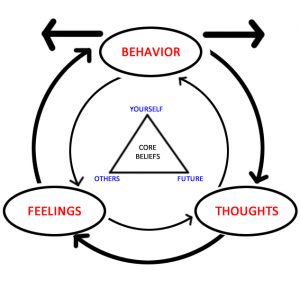The extension of a psychotherapeutic treatment would result in lesser treatment textbooks that can fit specific cases. Therapists need to know sufficient theory with the significance that explains the processes to induce how a particular issue can end to a resolution. There are similar topics in https://www.emeraldcity24hrvet.com/
It is possible for a therapist to make improvements regarding their judgment while individualizing step-specific therapy plans using unbiased theory. As a result, they can make inferences regarding the proper arrangements for any phase of a specific treatment to boost the amount of success for that particular therapy.

Source: pixabay.com
The Difference In Approach
The difference of approach is visible on the subject of the attitude of a therapist in the activation stimulation of a patient’s irrational pattern of intense emotions during the therapy. The communications in the session area are used in clarification to analyze illogical projections during their transference-based advancement. There is a necessity to establish a stable structure of limitations to prevent disruptive emotions in demolishing a working alliance. Because according to Stacy Donn Cristo, LMHC, “While many therapists are qualified to treat common challenges such as anxiety or depression, if you are interested in working with a specialist to address a specific challenge, you should consider looking out-of-network.”

Source: commons.wikimedia.org
“Therapy can be an important component of our professional identity as we learn from our own therapists.” Tyger Latham Psy.D. explains. Meaning, there is a focus on hatred as a method to feel strong, and revenge as an approach to control an individual in the cognitive-behavioral approach similar to transference-based approach. Transference-based approach regards the stimulation of hate as a defensive mechanism against fear of personality disintegration.
The Theory
Numerous authors contribute to the formulation and theory of etiology. They specify the borderline using the context of normal personality range, relations, and overlapping personality disorders. As such, the ideology of their treatment can be distinct or similar to cognitive-behavioral steps for borderline personality issues. An example is dialectical behavior therapy.
Necessity For Different Approaches
There is a necessity to experience and tolerate confused condition and explosive state cycles in both transference-based and cognitive behavior therapy approach. The objective is to increase the stability condition in the first steps of both treatments. It is the first phase regarding supportive treatment and pharmacologic approaches. The therapists need to have a good comprehension to go towards psychotherapy integration. A proficient comparison would be transference-focused psychotherapy to the current therapies such as cognitive therapy, dialectical behavior therapy, and Mentalization-based care.
The Signs
In psychopathology, threats are recognizable as both signs and symptoms. It also acts as a trial regarding the skills of the therapist for patients to observe if they can safely move forward. Such signs and symptoms are referable to homicidal impulses, suicide impulses, and substance abuse. In some cases, it can be mild depending on the level of psychopathology needs of a person.

Source: en.wikipedia.org
The focus on borderline personality disorder is most appropriate for psychotherapy researchers with basic training of three or more years. That is why “The diagnosis of “borderline personality disorder” carries a profound stigma for many people. Even some mental health professionals use the term pejoratively, which is not difficult considering that the diagnosis itself implies that someone’s personality is flawed,” says Stacey Freedenthal, PhD, LCSW.
They may be able to find a breakthrough and gain ideas of psychotherapy and use them to make improvements about the specific personality disorders of the patients. There are various noteworthy manuals and books for a therapist. However, the authors of these books would not quote all relevant literature even in a specific personality disorder and reading everything is an impossible feat even with summarization because it needs actual application.